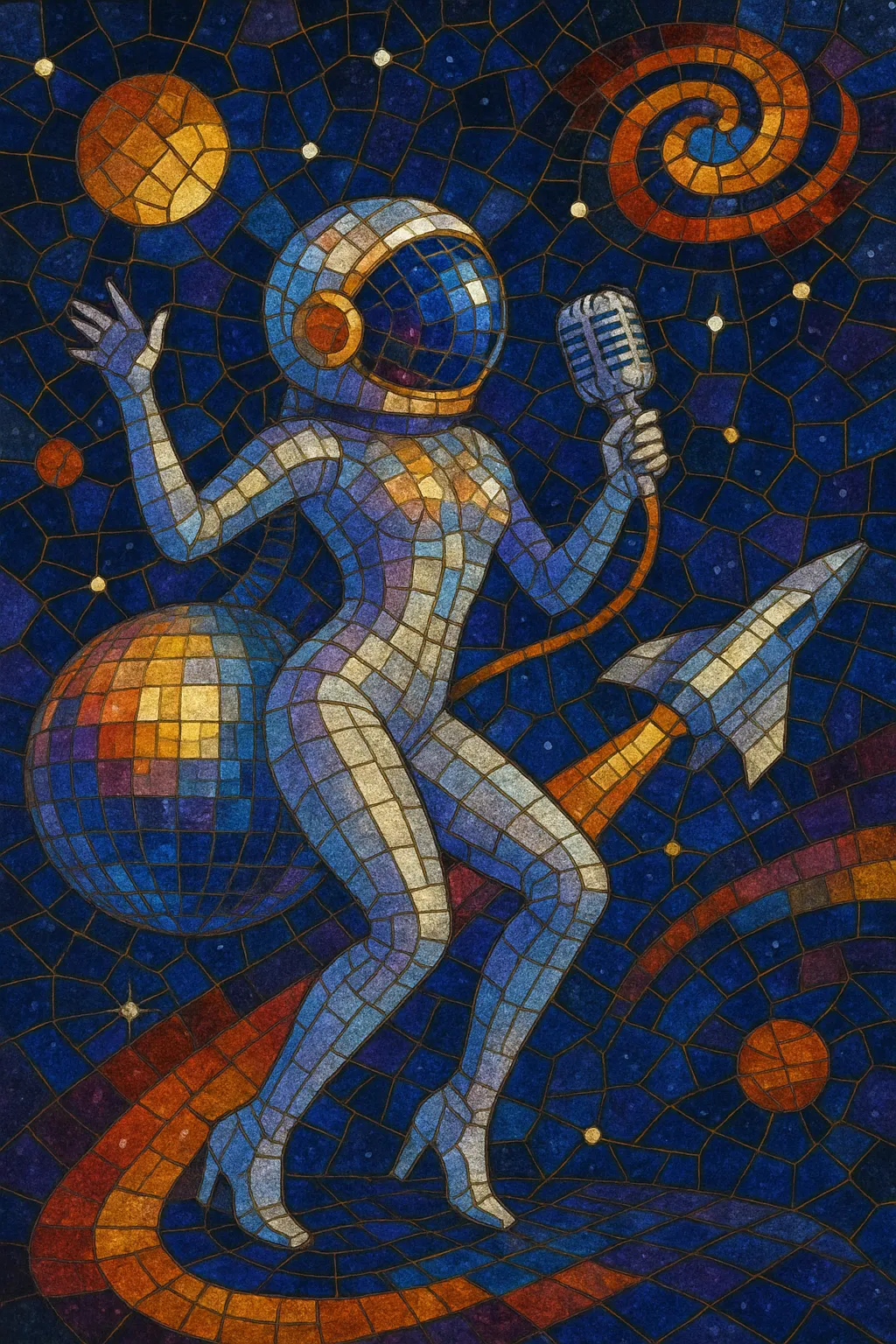Space disco is a late-1970s European strain of disco that blends four-on-the-floor dance rhythms with futuristic, science-fiction aesthetics. It emphasizes synthesizers, arpeggiators, vocoders, and lush cosmic sound design, often evoking images of star travel, high technology, and utopian futures.
Characterized by sleek motorik grooves, glittering pads, phased strings, and shimmering effects, space disco extends the hedonistic pulse of disco into a more cinematic, electronic realm. Extended mixes, dramatic breakdowns, and DJ-friendly intros/outros are common, while cover art and themes frequently reference astronauts, nebulae, and spacecraft.
Space disco emerged in continental Europe—particularly France—during the late 1970s as producers fused the dancefloor momentum of disco with the synthesizer-forward approach of electronic and Berlin School music. Tracks embraced sci‑fi imagery and timbres: swooping filter sweeps, arpeggiated basslines, and vocoders. Acts like Space (Didier Marouani), Cerrone, and Droids set an early blueprint alongside the sleek, futuristic pulse popularized by Giorgio Moroder.
Between 1977 and 1980, the style crystallized across France, Italy, and beyond. Singles such as Space’s "Magic Fly," Cerrone’s "Supernature," Dee D. Jackson’s "Automatic Lover," Harry Thumann’s "Space Disco," and Rockets’ robotic anthems defined the sound: steady four-on-the-floor drums, cosmically processed strings, and prominent synthesizer hooks. Visual identity—chrome suits, neon typography, and starship iconography—reinforced the genre’s forward-looking mood.
Space disco overlapped with Euro-disco and fed directly into early Italo disco and synth-pop. Its emphasis on sequenced basslines, drum machines, and electronic textures anticipated Hi-NRG and informed the broader shift from acoustic/funk rhythm sections to fully electronic dance production.
As disco waned in the early 1980s, space disco’s DNA lived on in Italo disco, Hi-NRG, and early synth-pop. Collectors and DJs later revived the sound: in the 2000s, Norwegian producers such as Lindstrøm and Prins Thomas reinterpreted the aesthetic with slower tempos, expansive arrangements, and a balearic/cosmic sensibility—often labeled "space disco" within the nu-disco sphere. Reissues and edits further canonized late-1970s staples and connected them to modern dancefloors.
Today, space disco is both a historical niche and a living influence. New producers borrow its arpeggiated propulsion, vocoder leads, and widescreen pads, while DJs pair vintage European cuts with contemporary nu-disco and leftfield house to sustain its interstellar groove.


